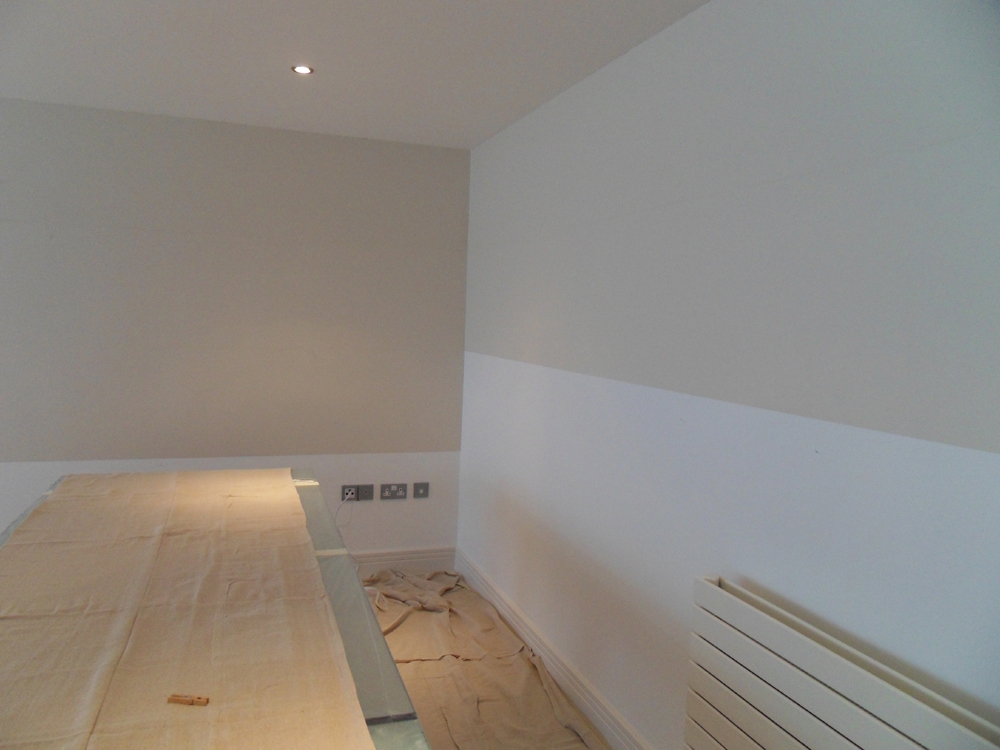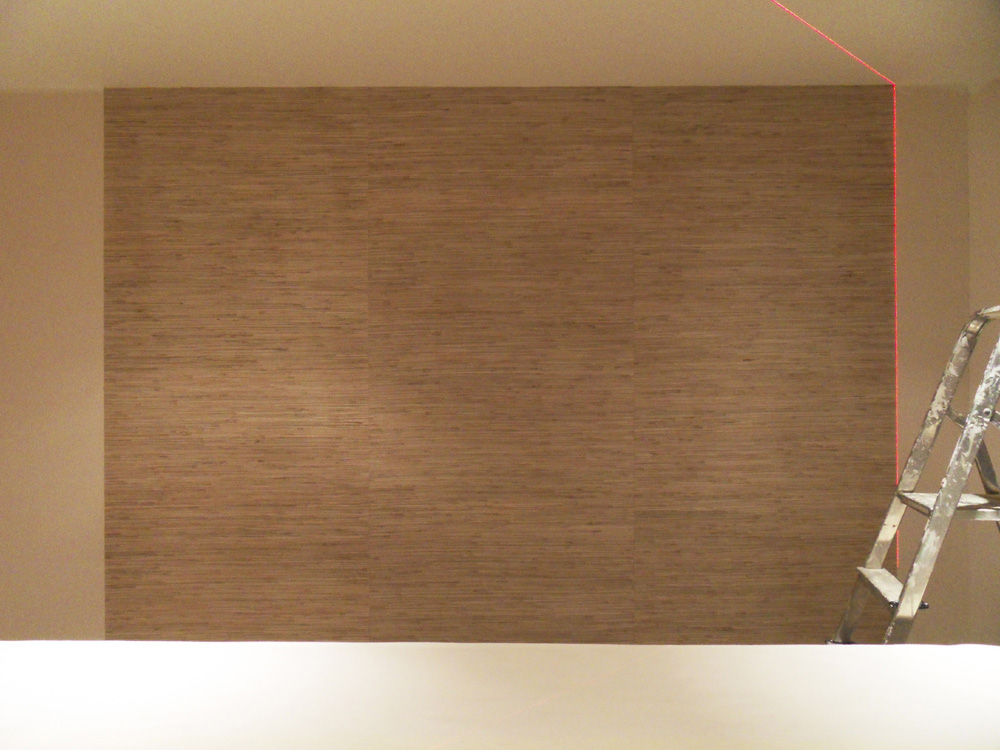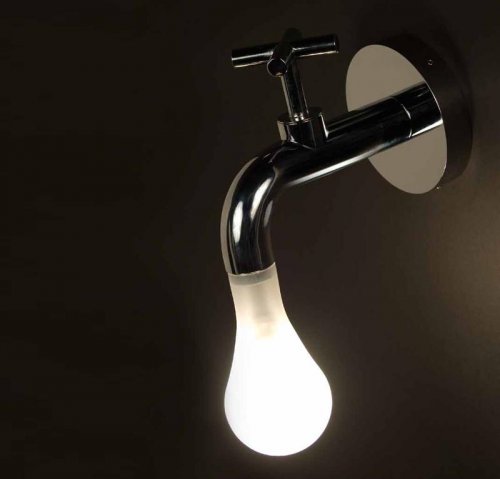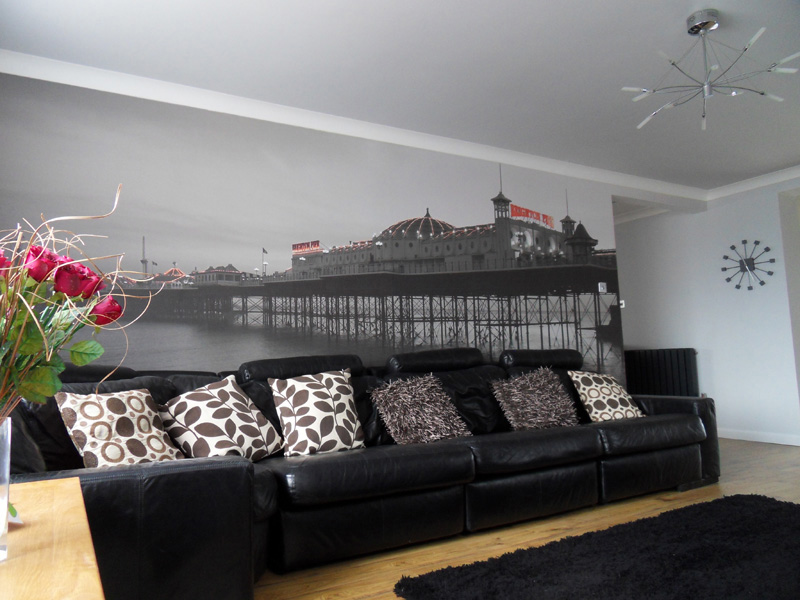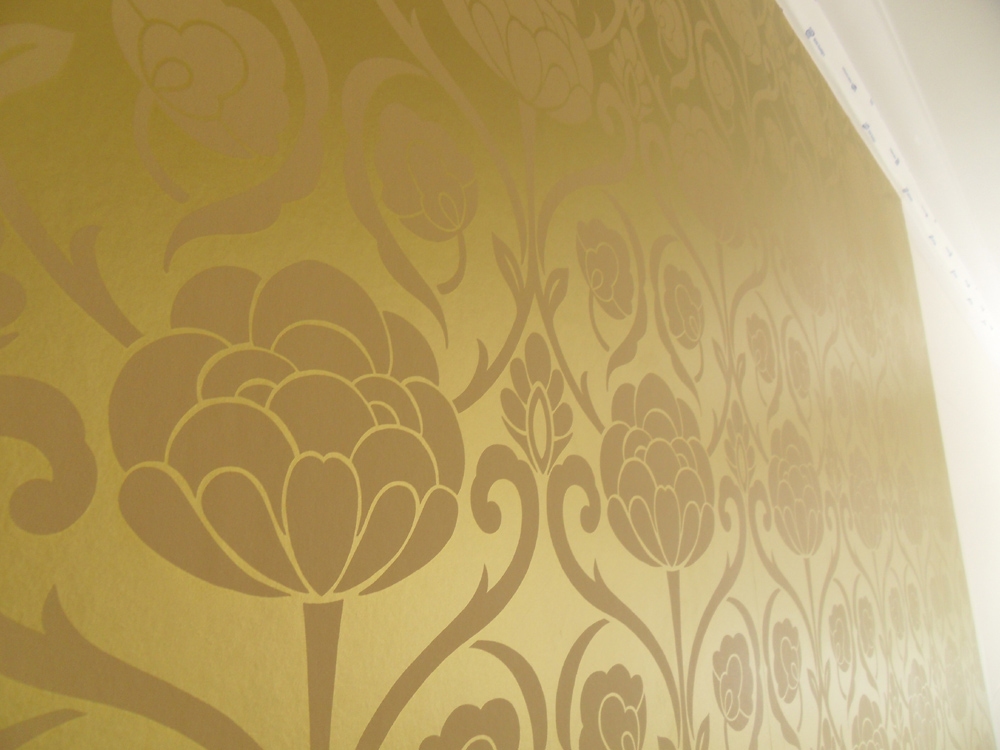This article explains why lining paper is essential when hanging certain types of finish wallpaper, and it’s not why you may think! Lining paper is often misunderstood, even by some professional decorators, many people believe it is used to smooth out problem walls but it is much more than that and in any case any decorator worth his salt would be able to sort out dodgy walls without having to call on lining paper to do it for him.
The true use of a lining paper has been lost to many because all too often decorators will use a thick grade lining paper to cover up defects in a wall rather than putting in some hard graft correctly prepping a wall prior to painting. Instead of filling and sanding, some try to just cover it all up with lining paper. 9 times out of 10 this is just laziness on the decorators part. We are not saying lining paper should never be used before painting, but the wall would have to be in a very bad state before we reached for it and even then we’d still do some prep work prior. And so lining paper is often seen as a wonder product before painting rather than its origins in paper hanging .
In fact the use of lining paper to sort out dodgy walls is one of the last reasons why we use it prior to hanging a finish wallpaper.
The different types of wallpaper are immense and it is true that not all types of wallpaper require a lining paper. For some it’s absolutely essential in a successful installation (see our example here Metallic gold wallpaper), other wallpapers will greatly benefit from its use and in some cases like certain digital mural wallpapers , it has no real use.
Here we outline just some of the benefits…
Shrinkage
All woven wallpapers expand when wet and shrink whilst drying. This means that even if you get perfect seams when you hang a finish wallpaper, you may well find you have gaps the next day. Lining paper resists this shrinkage of the finish wallpaper as it assists in the drying process and holds the wallpaper in its expanded state. In addition the wallpaper can get a much stronger bond and grip to a liner than if it was hung directly on to plaster. Think of it like Velcro where the fibres of each paper lock into each other and hold it in place.
Staining
Lining paper helps stop staining in two ways. Firstly the wallpaper is protected by this additional layer from any stains that may come directly from the wall, some stains may not be visible on a painted wall but suddenly manifest when wet with wallpaper paste and can leach into the finished wallpaper. It is true that this type of staining can also be combated by the use of a dedicated wallpaper primer paint but that’s a whole other post.
Secondly some delicate wallpapers can stain by the paste used to hang them, the inks, dyes and paints used in the printing of the wallpaper can run and bleed if they are left in contact with moisture for too long. As already mentioned a lining paper helps speed up the drying process and will draw moisture away from the front of the paper and of course reduce the risk of any surface staining.
Strength
Wallpaper will always try to shrink to near its original size even after it is dry. Putting constant stress on whatever substrate to which it is hung. This is often the cause of wallpaper failure even well after the decorator has left. If say for example it has been hung directly on to paint, the constant pressure on the paint can cause it to peel right off the wall and fail many years later. By cross lining these stresses are reduced as the lining paper will be trying to shrink one way and the finish wallpaper the other, so in other words the two forces are cancelled out by the other and in turn the overall stress placed on the wall itself is minimised.
It is the same reason why an engineered timber floor is stronger and more stable than a solid wood floor and also sheet ply wood. Timber naturally expands and contracts along its grain so by building up layers of wood with the grain at right angles to each other, the timber can no longer expand and contract at the same rate as it is held in place by the proceeding layer.
Uniformity
Lining paper provides a uniform surface on which to paper. Many walls are repaired and painted with many different types of products over there life and this means certain areas of the wall can be more porous than others. Of course this causes a wallpaper to dry at different rates in different areas, which again can cause you problems depending on the type of paper. Again it should be noted that the use of a specialist dedicated wallpaper primer can also provide a uniform surface on which to paper and in many cases we use this prior to even the lining paper being hung but we’ll leave that for another time…
Guarantee
Almost all wallpapers come with hanging instructions and most will recommend or insist on the use of lining paper. If this step of the installation has been omitted you can bet the manufacturer won’t entertain any claims should there be a problem with the wallpaper.
Flatness
Lastly we come to what many think a liner is for and yes it does provide a flat even surface but that should have been addressed well before the lining paper even touched the wall. Why the liner is beneficial in this sense is not to sort out huge defects but to sort out the tiny ones, tiny defects such as grit that may have found its way on to a painted surface and barely visible will be magnified 100 fold when a wallpaper is placed over and ‘tents’ around it. In addition some thin delicate papers can even show brush and roller marks through. The liner provides a smooth soft surface devoid of imperfections.
Conclusion
We hope this goes some way to explaining why our Brighton decorators recommend using lining paper for the best possible finish when wallpapering. We of course do have to concede that there is an additional cost attached to all of this but it’s relatively cheap, a single roll of a good quality lining paper is around £2.50 and installation is quick. All in all it’s a small price to pay for peace of mind and considerably extending the lifespan of your wall covering.

